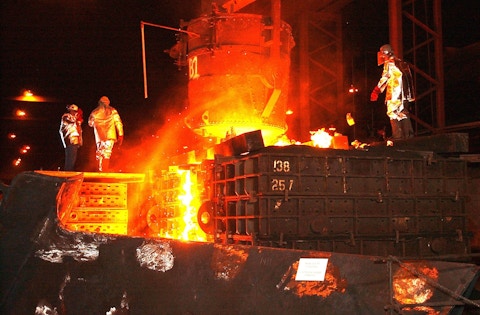More About This Show
The Smarter Building Materials Marketing podcast helps industry professionals find better ways to grow leads, sales and outperform the competition. It’s designed to give insight on how to create a results-driven digital marketing strategy for companies of any size.
In this episode, Zach and Beth talk to David Harris, author of Building Materials Channel Marketing, about how the United States’ changing trade relationship with China is impacting building product manufacturers, both now and in the future.
The Trickle Through Effect

There's very clear evidence that Chinese manufacturers have been hit by a decrease in exports, and they are doing a number of things to address that. This includes tightening up their own supply chains and trying to reduce costs, but they are also looking at developing supply chains in other markets that don't have that same geopolitical or international trade risk.
According to David, there's some real disruption in those supply chains, resulting in an increase in cost for U.S. partners and importers. And many of those increases haven’t even been fully felt yet.
With the real increase in tariffs occurring in May 2019, those costs didn’t fully get passed along from manufacturers to their suppliers for a month or two, leading to a trickle through effect. David expects the real impact on retail customers won't be felt until late 2019.
Not All Industries Are The Same

For manufacturers with a more sophisticated product, you may not even know what your supply chain exposure is to these tariffs. For products that really do depend on tightly integrated global supply chains, the impacts of the tariffs haven’t been fully felt yet, but it’s something to keep in mind.
For strategic materials, like steel, aluminum and rare earth elements, there's greater risk. These product categories have been hit with high tariffs that may fall into the basket of tactical tariffs. Tactical tariffs are used by the U.S. administration to force China to the negotiating table and really feel the pain, with a view of obtaining concessions.
Adjust and Adapt

If you’re looking for ways to better manage the impacts of tariffs, some products lend themselves to supply chain adjustments more readily than others. Consider the size and the scale of your business and what imports represent as a percentage of that business. What sort of a team do you have in place that can actually look at some of the alternatives?
Some of the alternatives would include looking at other markets, like Vietnam, where a lot of product importers are currently shifting their supply chains. Even Chinese businesses are setting up manufacturing bases in Vietnam.
But it’s not as simple as setting up shop somewhere new. There's an enormous amount of potential hidden costs in pursuing this avenue. China's supply chains are well developed and offer the advantage of scale and speed. While other locations may be initially appealing, they may not have the same capacity for delivery and flexibility.
Seize the Opportunity
The current economic climate isn’t all just doom and gloom, though. American manufacturers and importers working with Chinese partners may have an opportunity to reduce costs or prices, or to at least renegotiate terms. If competitors are struggling, this may be a chance to increase market share.
With a complex situation like this, there is no silver bullet, but companies who are able to look at the bigger picture and leverage changing conditions to their advantage still have an opportunity to thrive.
David also suggests this is an opportunity to speak with local governments and representatives. These tariffs are meant to help American businesses competitively, so the question needs to be asked about what’s being done to support American-made products or bring more products back domestically.
Don’t Believe (All) The Hype

While China and tariffs are a hot-button issue, it’s easy to lose the thread amid endless soundbites and headlines. Manufacturers may feel pressure to make changes in order to adapt and manage increasing costs, but David argues against being too hasty.
The hidden costs of shifting your supply chain to a new market are potentially risky. If you’re only looking to save 5-10% on a product delivery cost, that may disappear by changing supply markets. Companies will need to make additional investments and put a team in place to run that new local market and those costs add up.
And while costs may go down by moving to other locations, manufacturers need to be wary about sacrificing quality control. Newer emerging manufacturing markets may be financially appealing, but they can also be 30 years or more behind China in terms of sophistication and quality control.
Got a Question?
Get in touch with David at [email protected] or on LinkedIn.
If you have questions about how you can stay competitive as international markets change, let us know! Shoot us an email at [email protected] with all of your questions.








